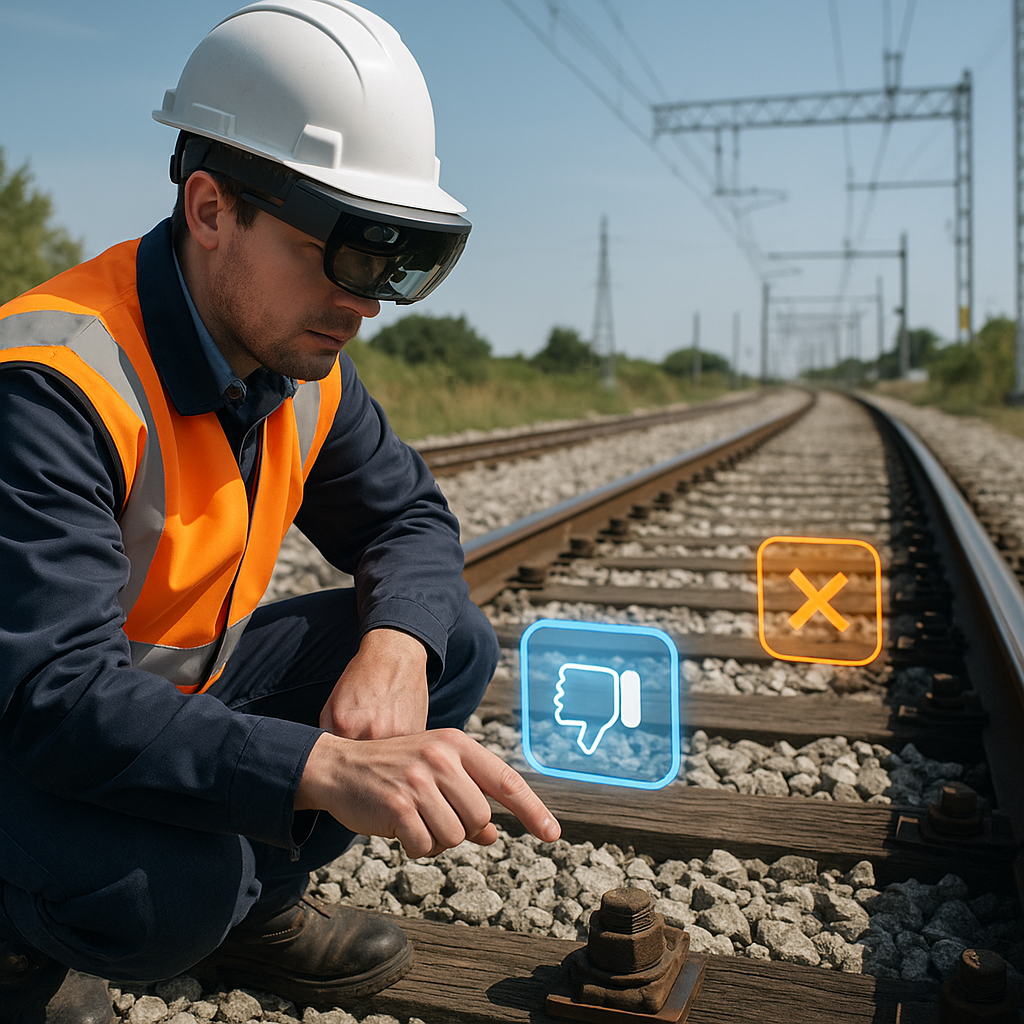Immersive tech boosts rail infrastructure monitoring accuracy
The VR system, built using Unity 3D and designed for HTC Vive Pro 2 headsets, creates realistic digital replicas of railway environments using high-resolution point clouds. It enables maintenance planners to explore rail sites remotely, interact with virtual representations of components like bolts and switches, and classify defects without being physically on site. The system provides intuitive teleportation-based navigation, interactive totems for task guidance, and real-time UI updates to document and confirm maintenance actions.

Researchers have developed a cutting-edge dual-technology framework combining augmented reality (AR) and virtual reality (VR) to significantly improve safety and operational efficiency in railway infrastructure maintenance. Preliminary lab-based evaluations have shown promising usability feedback.
Published in the journal Sensors, the study, titled “Augmented and Virtual Reality for Improving Safety in Railway Infrastructure Monitoring and Maintenance,” presents prototype systems that integrate immersive visualization, real-time diagnostics, and AI-driven anomaly detection to reduce human error, enhance situational awareness, and streamline decision-making.
How do AR and VR improve railway infrastructure monitoring?
The study presents a dual-track solution designed under the VRAIL project, funded by Italy’s Ministry of Economic Development. It responds to persistent safety challenges in railway maintenance by developing AR and VR systems that replace outdated manual inspections with immersive, data-driven interfaces.
The VR system, built using Unity 3D and designed for HTC Vive Pro 2 headsets, creates realistic digital replicas of railway environments using high-resolution point clouds. It enables maintenance planners to explore rail sites remotely, interact with virtual representations of components like bolts and switches, and classify defects without being physically on site. The system provides intuitive teleportation-based navigation, interactive totems for task guidance, and real-time UI updates to document and confirm maintenance actions.
In parallel, the AR application is deployed on Microsoft HoloLens 2. It guides field technicians using spatial overlays, audio cues, and gesture-based interaction. Upon recognizing physical landmarks such as level crossings, it pinpoints defect locations, classifies them visually, and allows technicians to record updates or documentation videos. This process not only enhances defect traceability but ensures precise, hands-free guidance throughout physical intervention workflows.
Together, these applications bridge the gap between complex infrastructure data and actionable insight. The VR platform supports immersive training and pre-maintenance planning, while the AR system enables in-field decision-making and real-time documentation, creating a continuous safety assurance loop for operators and planners alike.
What technical challenges does this framework overcome?
Traditional railway maintenance heavily depends on 2D schematics, printed reports, and manual data interpretation, which often lead to subjective decisions, human error, and slow response times. Diagnostic data collected by high-tech inspection trains frequently remains underused due to limited integration into operational workflows.
To address this, the study integrates VR/AR systems with intelligent backend architecture. This includes a server application developed with Python and Django, a georeferenced PostgreSQL database for infrastructure assets, and an anomaly detection module powered by AI. The system architecture ensures that real-time diagnostic data, including bolt conditions, switch functionality, and track integrity, can be seamlessly accessed and visualized in immersive environments.
For example, the VR interface uses visual cues and simulated terrain to help mission planners assess environmental conditions, such as vegetation, access points, and visibility, before dispatching crews. It allows accurate status classification of bolts based on high-resolution imagery, and color-coded interactions ensure visual confirmation of assessment results.
On the AR side, the use of model target recognition (via the Vuforia engine) allows the system to spatially anchor virtual elements directly on top of real-world infrastructure. The technician receives on-screen prompts and auditory instructions while manipulating components in real-time. Importantly, maintenance progress, defect statuses, and video reports can be logged hands-free, feeding directly into the maintenance management systems.
By embedding intelligent data analysis within immersive interfaces, the VRAIL framework eliminates the disconnection between detection and intervention. It shifts operators from passive data consumers to active, well-informed participants in real-time infrastructure safety.
What are the implications for railway safety and future developments?
The integration of AR and VR in railway maintenance carries substantial safety, economic, and organizational implications. The immersive systems reduce the need for on-site pre-inspections, lowering both cost and personnel exposure to risk. Real-time decision-making enabled by AR headsets ensures that repairs are precise and fully documented, while the VR-based training and planning simulations allow inexperienced staff to gain familiarity with emergency protocols and site-specific conditions in a risk-free environment.
Notably, this research offers a unique contribution by introducing seamless interoperability between AR and VR systems, supporting end-to-end workflows that extend from defect detection to intervention planning and post-maintenance reporting. This continuity builds a shared operational language across roles and significantly enhances traceability.
The researchers emphasize that their work departs from earlier studies that treated immersive technologies as standalone prototypes. Instead, they deliver an integrated, human-centered platform where immersive visualization, intelligent analytics, and usability coalesce to enable a robust and scalable safety infrastructure.
Future directions for the project include:
- Expanding support to additional infrastructure defect types;
- Incorporating predictive maintenance capabilities;
- Adapting UI and interaction methods for non-expert users;
- Exploring nighttime simulation in VR and field-condition testing in AR;
- Conducting benchmark studies comparing immersive versus traditional systems on performance metrics such as error rate, inspection time, and user workload.
Preliminary lab-based evaluations have shown promising usability feedback. However, large-scale field deployments and controlled comparative trials are planned to assess the system’s impact on operational safety and efficiency at scale.
- FIRST PUBLISHED IN:
- Devdiscourse










